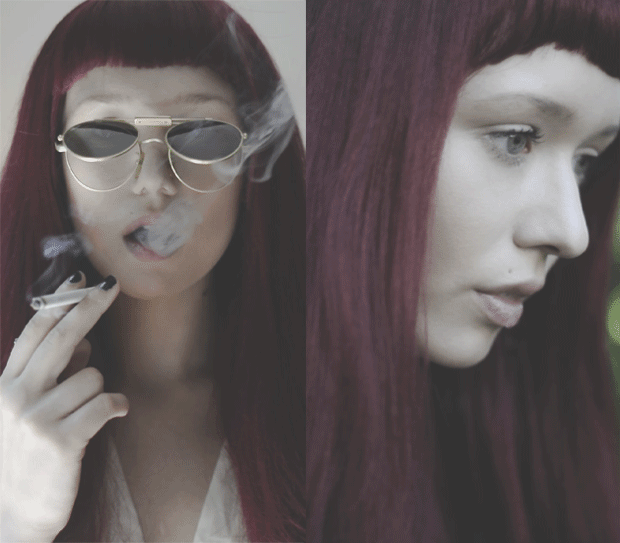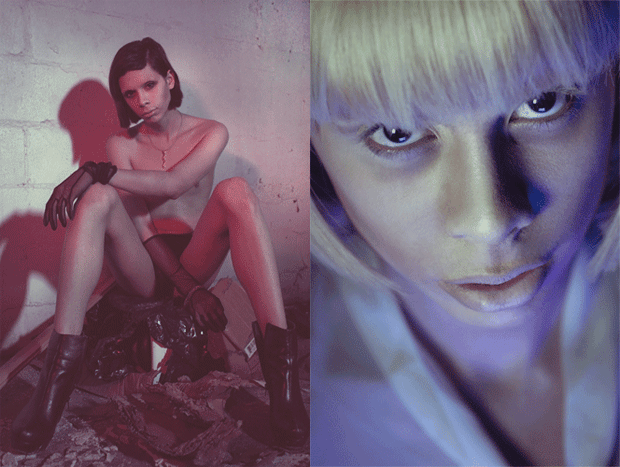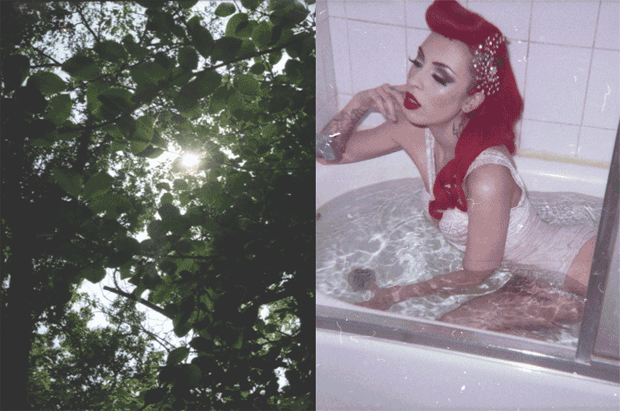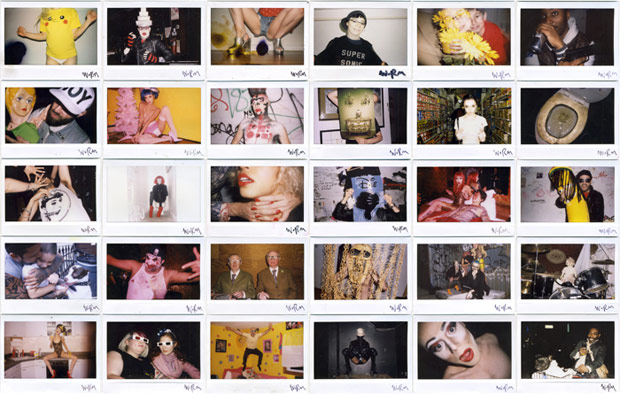Worm Carnevale
The subversive Bushwick photographer on reversing received meanings through DIY and technology


Take teenage sexuality and factor in violence and irony and you get Worm Carnevale. Originally from Florida and now based in Brooklyn’s Bushwick neighborhood, Carnevale moved to New York in 2008. Whether for film, photography or installation, his provocative imagery combines the obvious with the abstract, comedy with drama and vintage with avant-garde for the power to be at once repulsive and fascinating.
While others have addressed similar themes through sophisticated techniques and a combination of old and new technologies, Carnevale offers new perspectives on contemporary photography. His latest work includes an extensive series of instant film images, 300 of which will be included in his upcoming solo show, “It’s NOT a FU#%ING Polaroid,” at FUCHS Projects 19-28 October, and at the NUTUREart’s 2012 Benefit at Charles Bank Gallery on 28-29 October. Guests will be able to pull the images off the gallery walls and purchase them at the show.
With such a curious approach to his art, we talked to Worm on the issues he addresses in his work, his creative process and technique. Check out the interview and more images after the jump
How would you describe yourself as an artist?
I would definitely describe myself as more of a magician or an illusionist than anything else. Interestingly enough, as a kid, I used to go around my neighborhood to birthday parties with all these magic tricks that I had either come up with or bought in the magic shop. I’ve always been an entertainer at best.

What type of medium do you work with?
I work with mostly photography, specifically 35mm and 120 formats. When it comes to video, I’ll use almost anything: DSLR, VHS and even Super 8mm. I like the fact that I can mix all three together nowadays; converting everything to a digital file to create great dynamics between the different formats. You can create very diverse and dynamic end results in regard to mood and overall tone. With VHS for example, you kind of go back to a 1980s or ’90s aesthetics, this DIY feel. Whereas if you do something with Super8, you can go for something super grimy but also high end and clean as well. Digital has a much more modern, high end feel which should not be overlooked. Each format has extreme value. Combining these different technologies together is a big service to photography and cinema. Unfortunately these mediums are so dependent on technology that everyone has been taught to believe that you can not reach high end results with “out-dated” technologies. It obviously depends on the context of what you’re doing but mixing older and newer technologies allows you to create a very positive and robust outcome.

What are the different issues that you address in your work? Although artsy, some of it could also fit in documentary photography. What message are you are trying to communicate?
I tend to focus on adolescence, identity and sexuality. I also focus on death and violence, so to speak; how one’s view on death relates to their identity. Regarding your question about documentary photography, I would say that photography in general is a documentation of our lives. However more accurately, it’s a documentation of how we individually view the world. That’s where art starts for me. I incorporate elements of reality into my work but I also want the viewer to feel something surreal.
For example, you know that a film you are about to watch has nothing to do with reality but yet it still can scare you, make you cry, etc. That’s the power I’m trying to communicate. Regarding my message, I try to show how we can reverse received meanings—how we can find bad things to be funny or funny things to be sad; how we can read good things out of what’s bad, and inversely. Overall I just want to entertain people while giving them something to think about.

How would you describe your creative process?
It has changed a lot over the years. I first started creating without a plan and nothing really made sense. I would say it was good creative vomit. Over the last couple of years however, I’ve been able to formulate a pretty concise pattern. If I find something I feel inspired by, I’ll take that and I’ll expand it on intellectually. I might take a knife, for example. A knife can be taken in many different ways: a functional one such as cooking, a violence approach, or even maybe a sexual approach. That stabbing or cutting of a knife also coincides with a sexual movement, a thrust. I have a phrase: “Stick it in and pull it out.” That can be violent or sexual in the place where sex and violence come together. From this intellectual approach I’ll expand on imagery and choose a medium to deliver it: film, animation, still photography, triptych, etc.

Unlike other photographers that address similar themes, you seem to have a pretty sophisticated technical approach. What techniques do you use?
I don’t have a formulated technique. It goes back to using different formats. However, I don’t look at photography and cinema as inorganic. Even with my digital approach, I’m still using organic processes. I don’t want to depend only on the camera as being the end result. For the animated hologram series for example, I used a technique called lenticular photography. It actually dates back to the birth of photography. It was popularized in the 1920s, then in the ’50s during 3D films and then again in the ’80s. The basis of the technique is using multiple lenses at one time. Then the shots are combined together to create an effect where the photograph seems to pop out at you because of the differently shot perspectives. Now that animated GIFs are so prevalent you can combine the shots together via the computer. This wasn’t possible during the rise of lenticular photography. Again, as I explained earlier, it comes back to combining older and newer technologies together to have a robust result.
Who has influenced your work?
Just to name a few favorites: Alfred Hitchock, Charlie Chaplin, Martin Scorsese, Guy Bourdin, Stanley Kubrick, Jean Michel Basquiat, Egon Schiele, Andy Warhol, Cindy Sherman, John Balderassi, Joel Peter Witkin, Irving Penn.
You live in Bushwick, Brooklyn. Is that part of your work? How does this influence you?
I grew up in South Florida, a multicultural environment. I find this again living in Bushwick, something I cannot escape and would never want to depart from if given a choice. I’m inspired by a “DIY and just get this done” behavior. Give me those 99-cent stores, some crappy Chinese food, a roll of duct tape and some toilet paper that hurts when you wipe, and let’s make a castle. It’s hard to answer this question but I like the fact that I live in a neighborhood where most things that are going on are pretty much DIY and a small business mindset—working with what you have.

““It’s NOT a FU#%ING Polaroid”” will show at FUCHS Projects from 19-28 October 2012. More works are available on Worm Carnevale’s blog and website.












